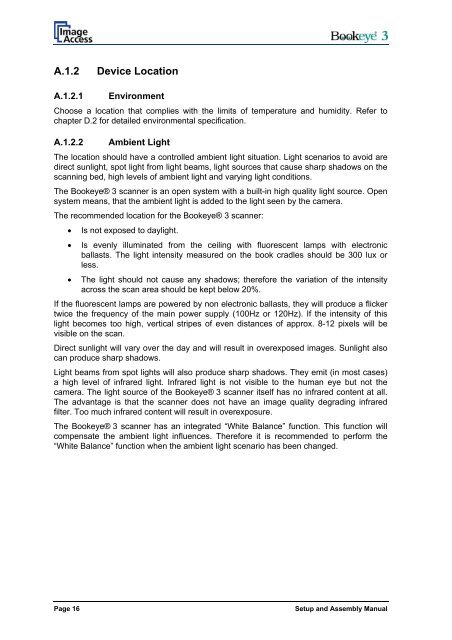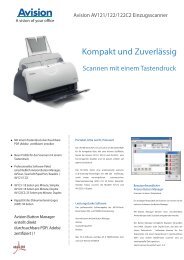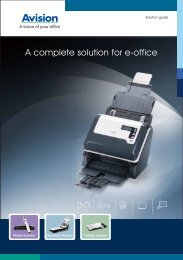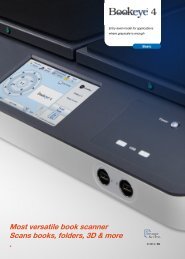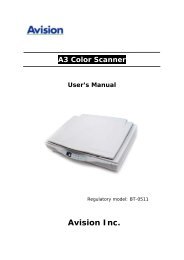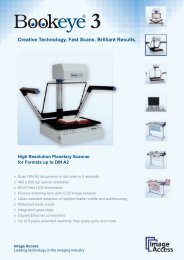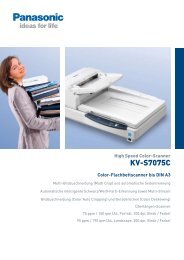Setup and Assembling Bookeye 3 - Image Access Inc.
Setup and Assembling Bookeye 3 - Image Access Inc.
Setup and Assembling Bookeye 3 - Image Access Inc.
You also want an ePaper? Increase the reach of your titles
YUMPU automatically turns print PDFs into web optimized ePapers that Google loves.
A.1.2<br />
Device Location<br />
A.1.2.1<br />
Environment<br />
Choose a location that complies with the limits of temperature <strong>and</strong> humidity. Refer to<br />
chapter D.2 for detailed environmental specification.<br />
A.1.2.2<br />
Ambient Light<br />
The location should have a controlled ambient light situation. Light scenarios to avoid are<br />
direct sunlight, spot light from light beams, light sources that cause sharp shadows on the<br />
scanning bed, high levels of ambient light <strong>and</strong> varying light conditions.<br />
The <strong>Bookeye</strong>® 3 scanner is an open system with a built-in high quality light source. Open<br />
system means, that the ambient light is added to the light seen by the camera.<br />
The recommended location for the <strong>Bookeye</strong>® 3 scanner:<br />
• Is not exposed to daylight.<br />
• Is evenly illuminated from the ceiling with fluorescent lamps with electronic<br />
ballasts. The light intensity measured on the book cradles should be 300 lux or<br />
less.<br />
• The light should not cause any shadows; therefore the variation of the intensity<br />
across the scan area should be kept below 20%.<br />
If the fluorescent lamps are powered by non electronic ballasts, they will produce a flicker<br />
twice the frequency of the main power supply (100Hz or 120Hz). If the intensity of this<br />
light becomes too high, vertical stripes of even distances of approx. 8-12 pixels will be<br />
visible on the scan.<br />
Direct sunlight will vary over the day <strong>and</strong> will result in overexposed images. Sunlight also<br />
can produce sharp shadows.<br />
Light beams from spot lights will also produce sharp shadows. They emit (in most cases)<br />
a high level of infrared light. Infrared light is not visible to the human eye but not the<br />
camera. The light source of the <strong>Bookeye</strong>® 3 scanner itself has no infrared content at all.<br />
The advantage is that the scanner does not have an image quality degrading infrared<br />
filter. Too much infrared content will result in overexposure.<br />
The <strong>Bookeye</strong>® 3 scanner has an integrated “White Balance” function. This function will<br />
compensate the ambient light influences. Therefore it is recommended to perform the<br />
“White Balance” function when the ambient light scenario has been changed.<br />
Page 16<br />
<strong>Setup</strong> <strong>and</strong> Assembly Manual


